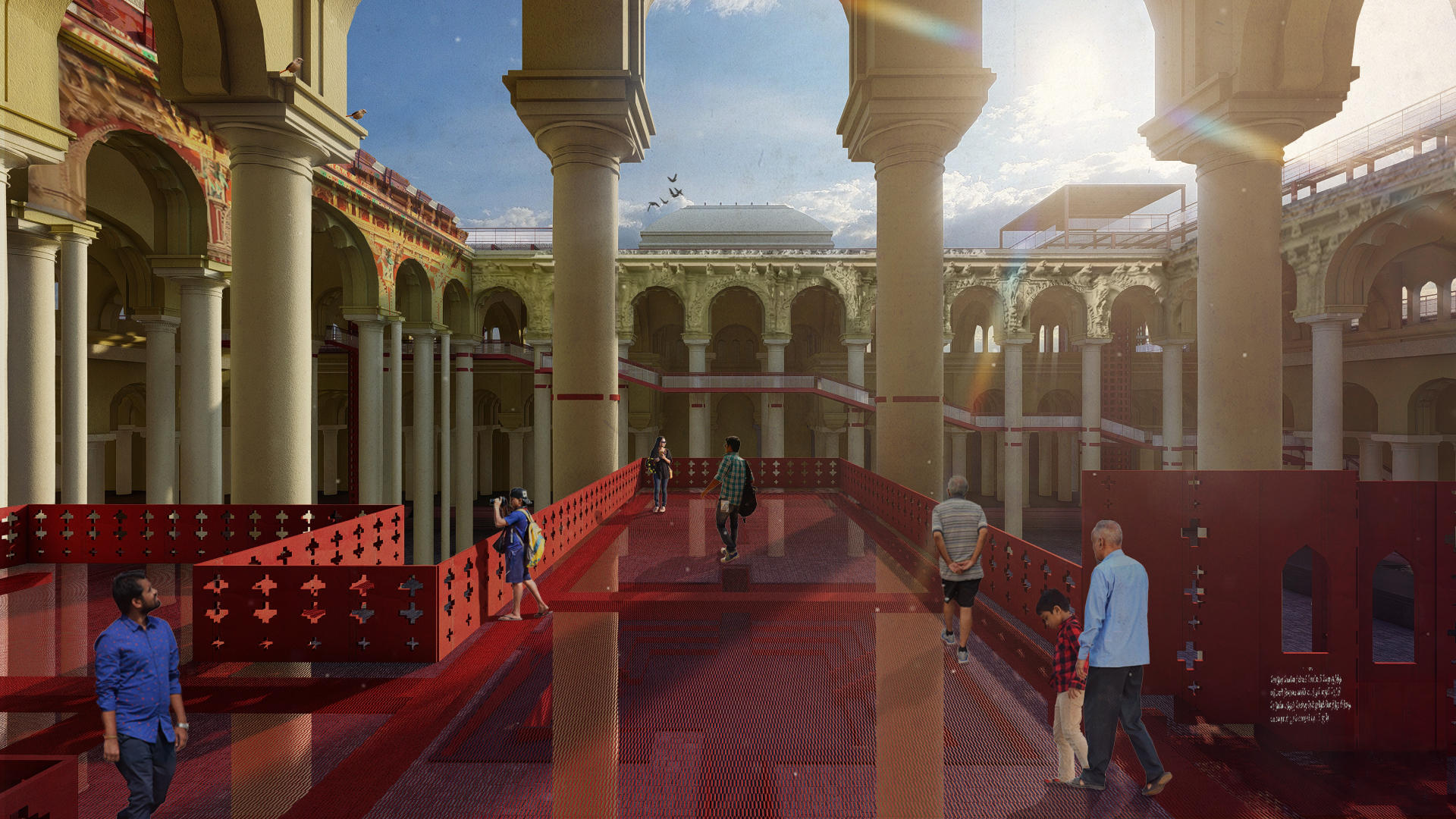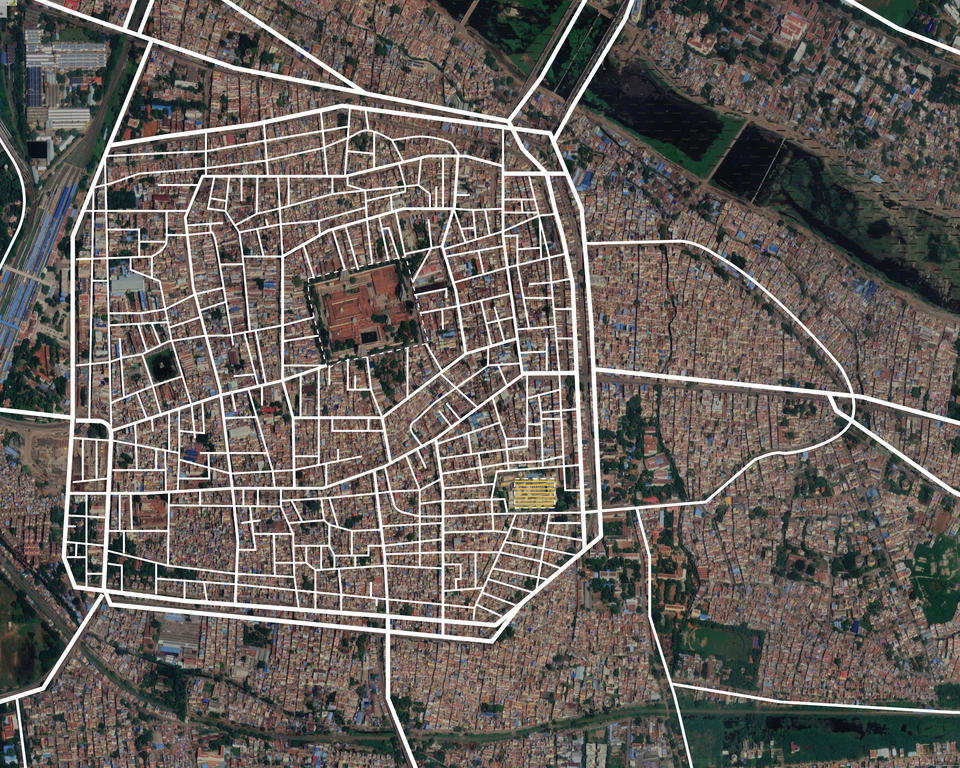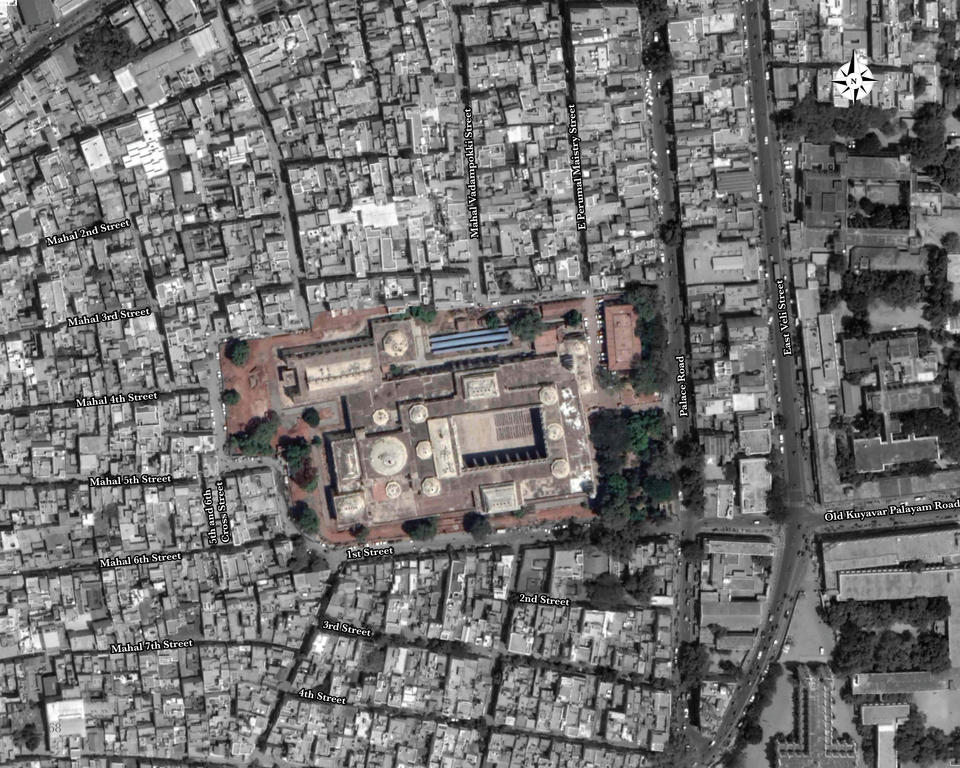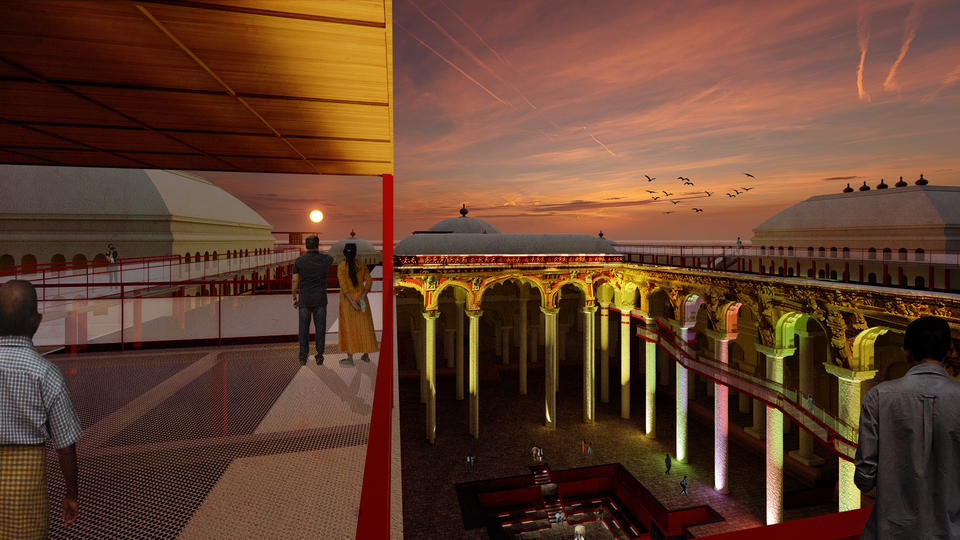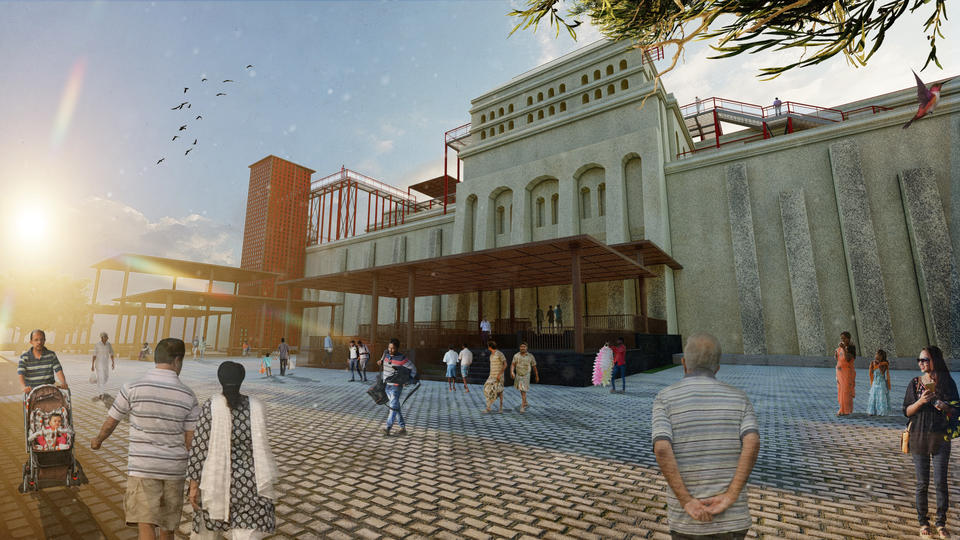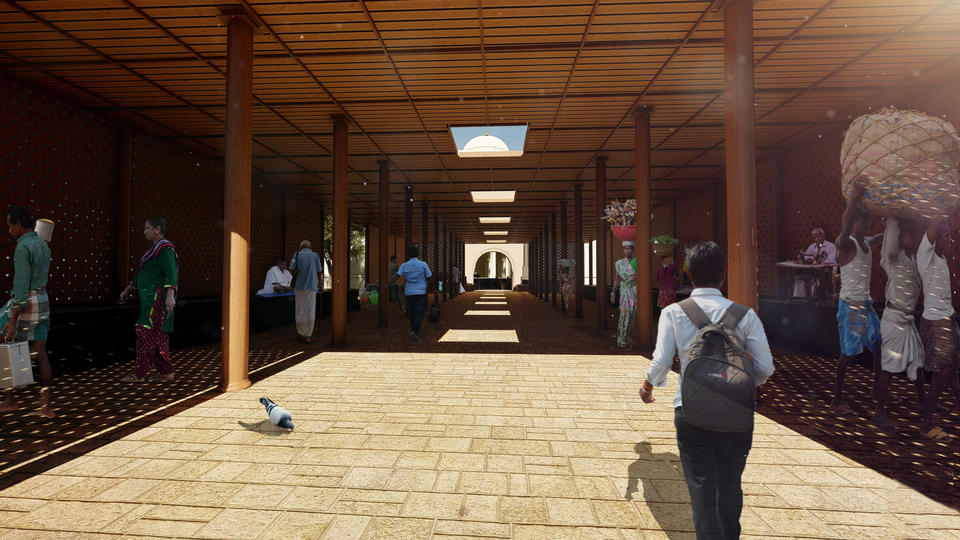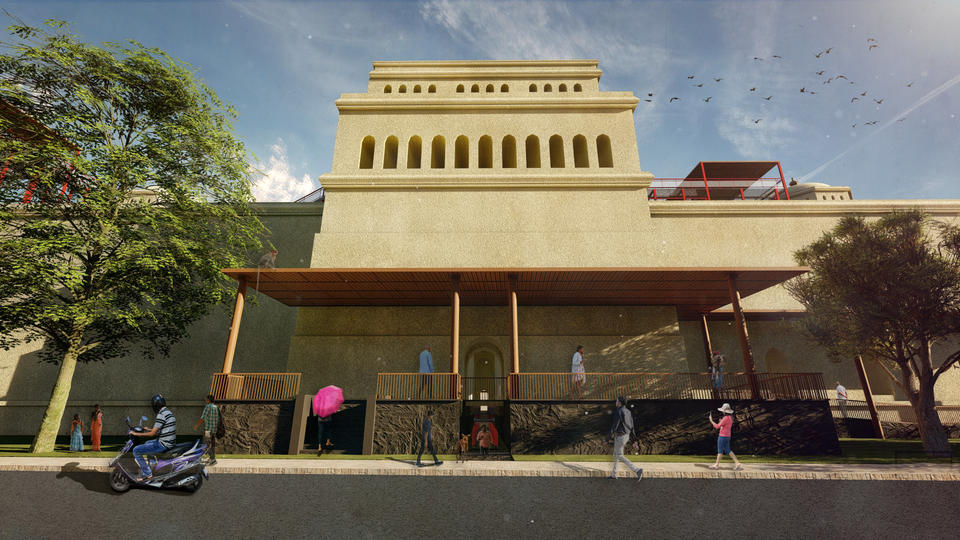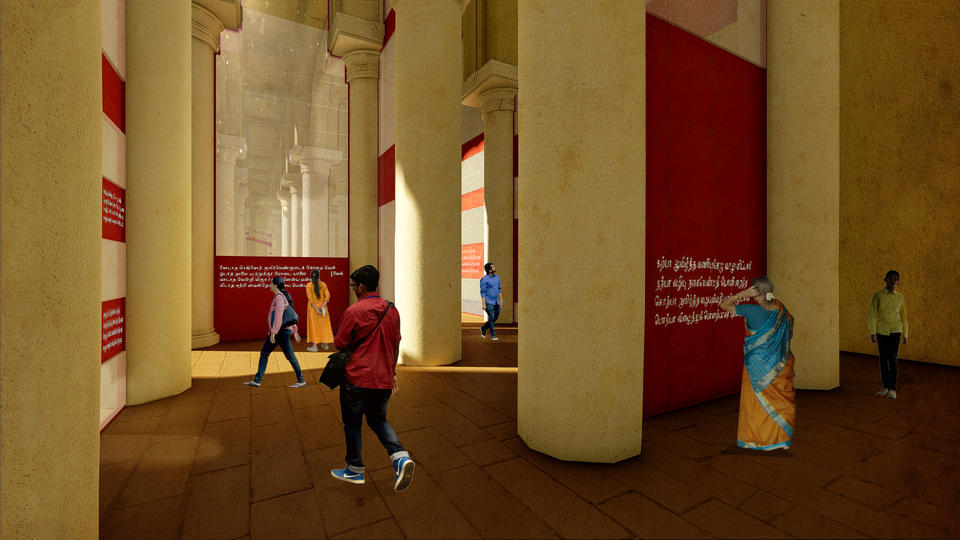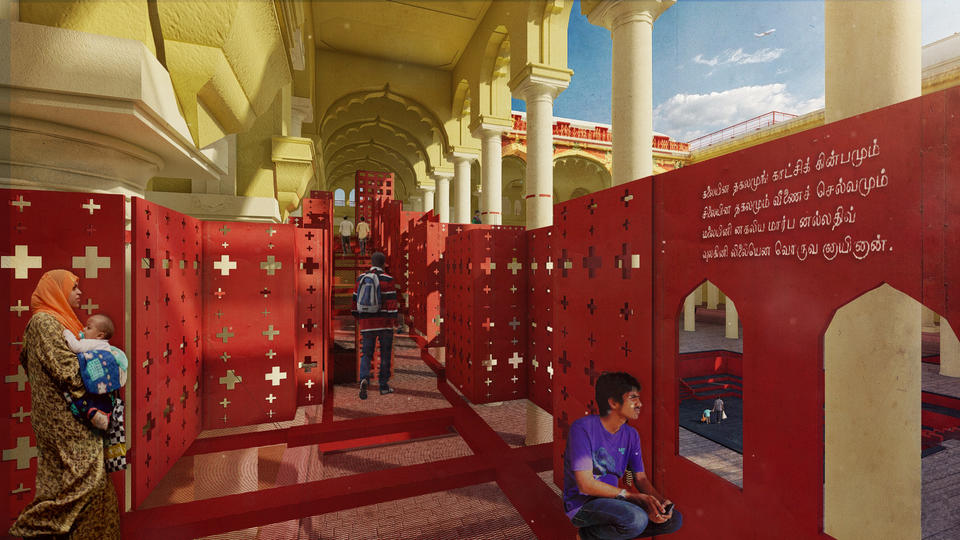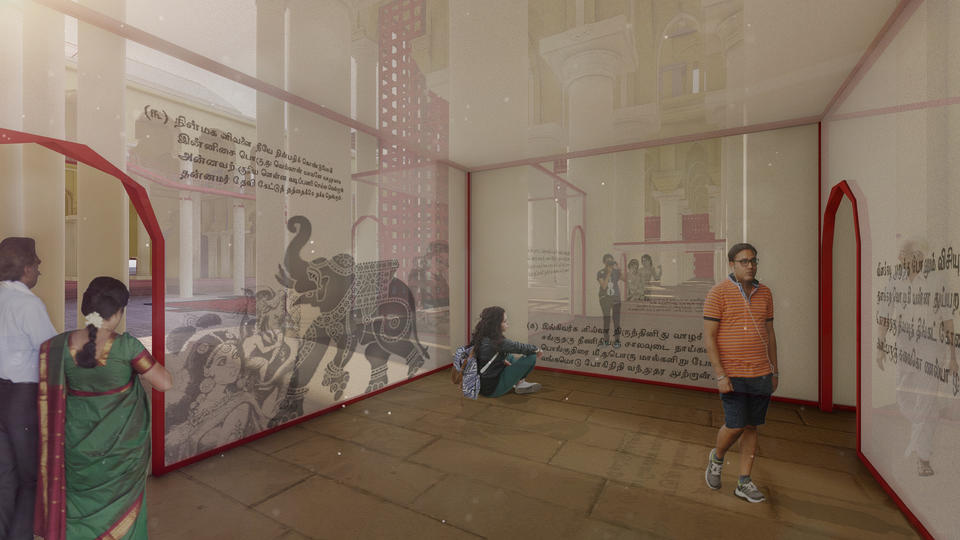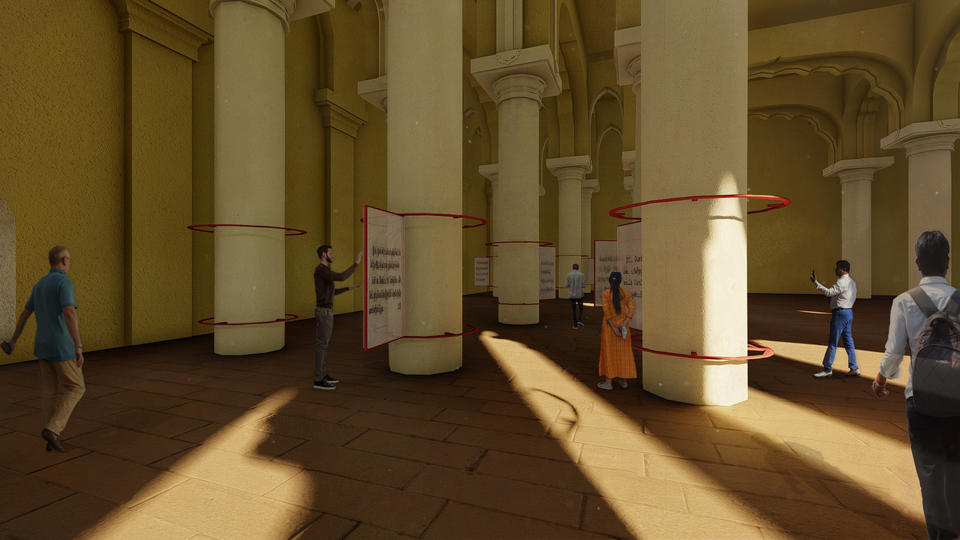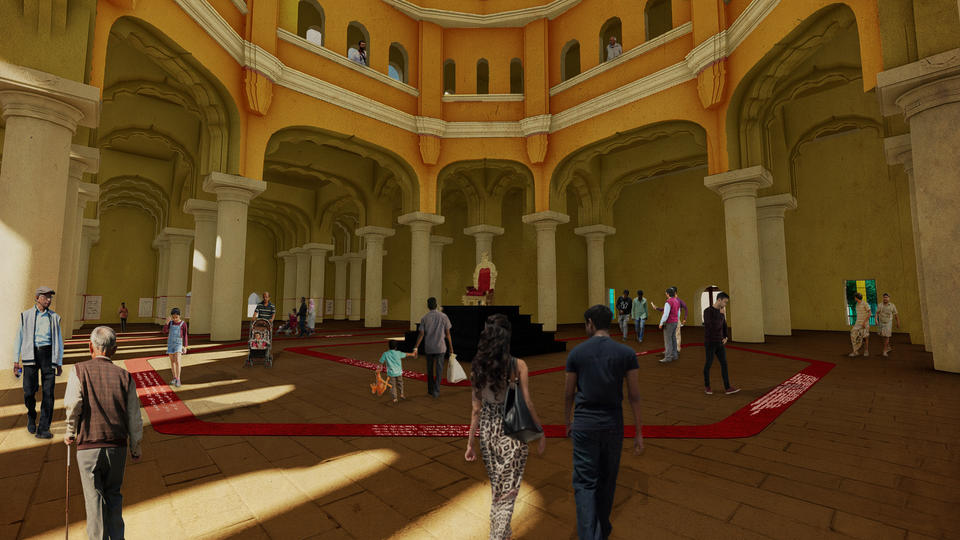Ritualizing of Space in the 21st century
Fostering of Communal Identity through Celebration of Tamil Culture
Image
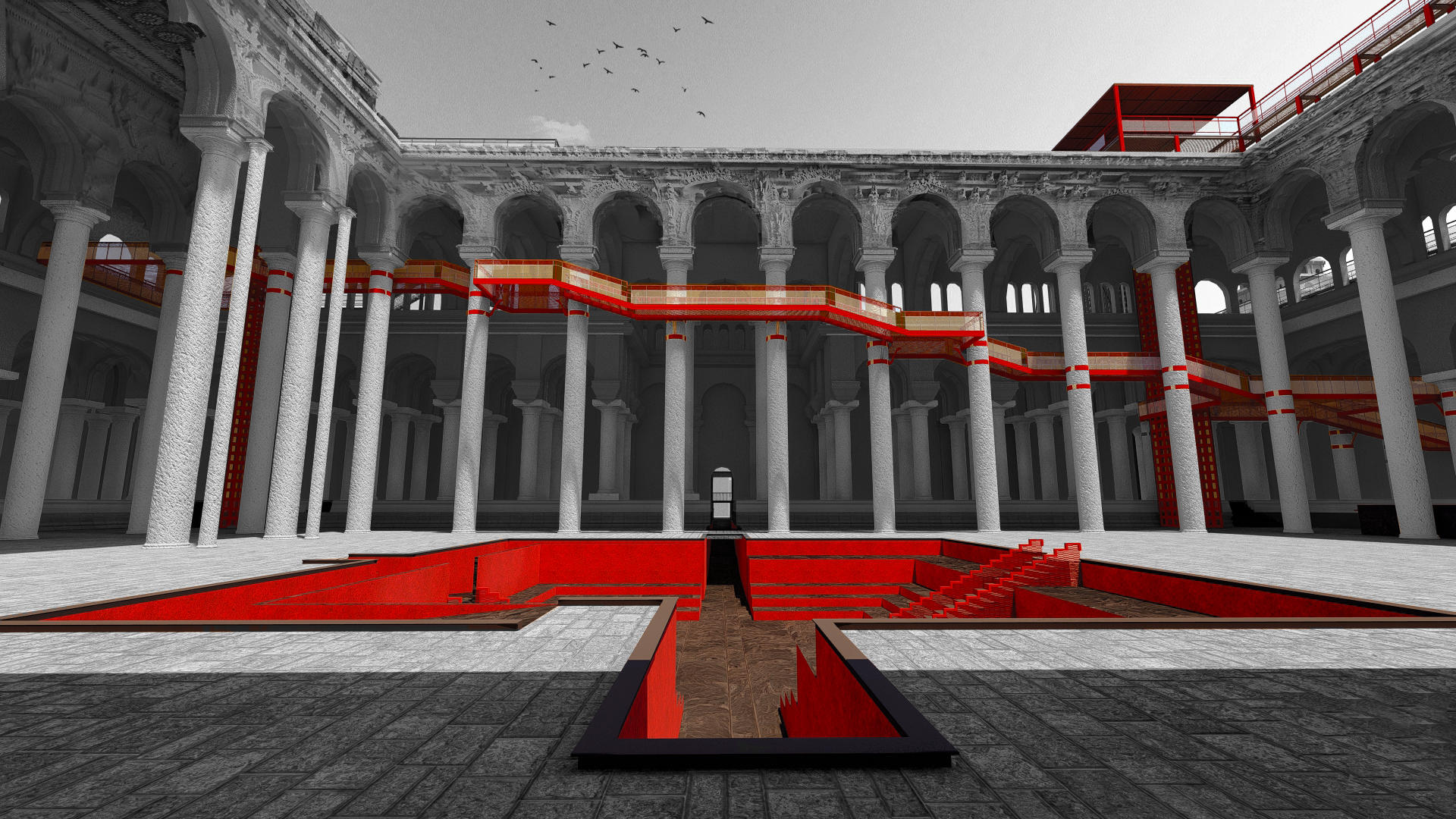
Thesis Abstract
South India is known for its traditional belief systems and the numerous architectural manifestations of these beliefs. The scale and extravagance of temples and the palaces for the kings are an example of how important culture and ritual were in the past. Now some of these structures, such as the Thirumalai Nayakar Palace in the city of Madurai, the cultural capital of Tamil Nadu, stand in a modified societal context with no cultural or ritualized significance. Moreover, the host of this project, the Thirumalai Nayakar Mahal, situated in a city brimming with multiple sacred rituals performed along the city streets, characteristic of the city and state culture. The Tamil language forms a major part of this culture. Tamil Sangam, which were literary academies or corpus at which Tamil scholars discussed and recited Tamil poetry and other literary works, have played a pivotal role in the retainment of this unique culture. Analyzing the relevance and basis of the city’s sacred rituals provides a more nuanced understanding of the local culture and traditions of the society. Using basic elements of space management such as circulation, wayfinding and distinction of character of space, a new urban space can be created within the palace grounds to give a contemporary order and meaning to people using the host structure.
This thesis is a study of how societies with strong existing culture and sacred rituals can dictate the design of spaces inspired by the values rituals bring to life. The adaptive reuse of this space will demonstrate how history, culture and existing traditions can be used as materials to re-engage the public with a historic host structure. The Thirumalai Nayakar Palace will be adapted to the new context by spatially incorporating the essence of the existing sacred rituals and bring the community together through the common thread of Tamil Culture. Adapting these spatial cues will help create a space for all visitors that brings the people of Madurai together, creating a center for Tamil Culture through the celebration of the literature and the palace’s architecture itself.
Right: Photo of Thirumalai Nayakar Mahal Entry - Taken by Lakshminaarayanan S
Image
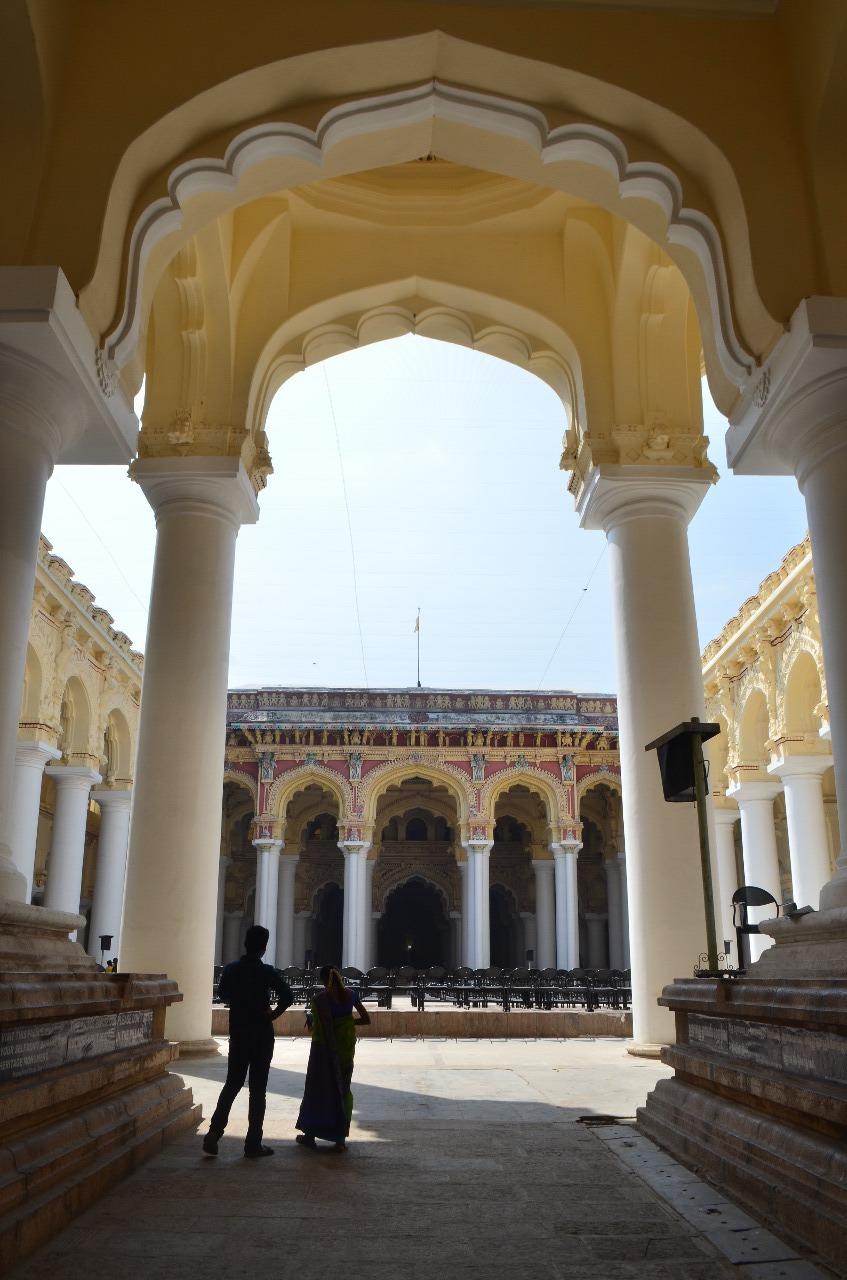
Decoding Rituals
Rituals and the performance of rituals form an integral part of our lives. Right from reciting hymns to going for a jog every morning, constitute as rituals. Rituals are regular habits that have a set pattern or rhythm to it which if altered feels incorrect. The word ritual by itself points to a symbolic action, a repetitive enactment. According to a research paper on the structure of ritual practice, ritual is a “..social action that (a) includes predefined sequences of action characterized by rigidity, formality and repetition, which is (b) embedded in systems of meaning and symbolism, and which (c) contains non-instrumental elements (i.e. causally opaque and goal demoted elements)”.(1)
(1) Kapitány R, Kavanagh C, Whitehouse H. 2020 Ritual morphospace revisited: the form, function and factor structure of ritual practice. Phil. Trans. R. Soc. B 375: 20190436. http://dx.doi.org/10.1098/rstb.2019.0436
Image credits: Kathakali: https://in.pinterest.com/pin/843650942688708504/, Jama Masjid: https://www.pinterest.com/pin/296815431674056530/, Ganga Arti: https://www.tripadvisor.in/AttractionProductReview-g297685-d12968568-Th…
Image

Image

How do you characterize Rituals?
What do rituals do that draw us towards a constant need and attention to perform them? Irrespective of its significance, every ritual has cognitive underpinnings guided by the cultural aspect of the context. There are mainly four recurring impulses to rituals, “(i) the normative scripting of actions; (ii) the use of interactions to signal coalitional identity, affiliation, cohesiveness; (iii) magical claims based on intuitive expectations of contagion; and (iv) ritualized behaviour based on a specific handling of the flow of behaviour.” (2)
Rituals practiced in groups or communities bring out the phenomenon known as collective effervescence. It is a sociological concept coined by Emile Durkheim which means that it is an instant feeling of excitement and togetherness that is felt by people when they get together to perform highly arousing events. The main intention of realizing these cognitive impulses is to bring out elements or factors that are a common theme in rituals. If we closely look at rituals at least three of the following factors are a constant – sequential, symbolism, ordering, goal oriented and reenactment.
(2) Boyer P, Liénard P. 2020 Ingredients of ‘rituals’ and their cognitive underpinnings. Phil. Trans. R. Soc. B 375:20190439. http://dx.doi.org/10.1098/rstb.2019.0439
How is Architecture influenced by Rituals? Can the ritualization of the activity be enhanced by the space? Apart from the action itself architecture plays a major role in enhancing the experience of a person involved in these guided engagements. And most of the examples that come to mind are religious structure such as temples and structures associated with rite of passage.
Image credits: http://www.doncronerblog.com/2015/07/iran-yazd-towers-of-silence.html, …, David. n.d. “The Mobile Matrix: The Hijaz Railway as Ritual Space and Generator of Space: Ebscohost.” Accessed October 6, 2020. http://web.a.ebscohost.com/ehost/pdfviewer/pdfviewer?vid=1&sid=a6165a5a…
Image
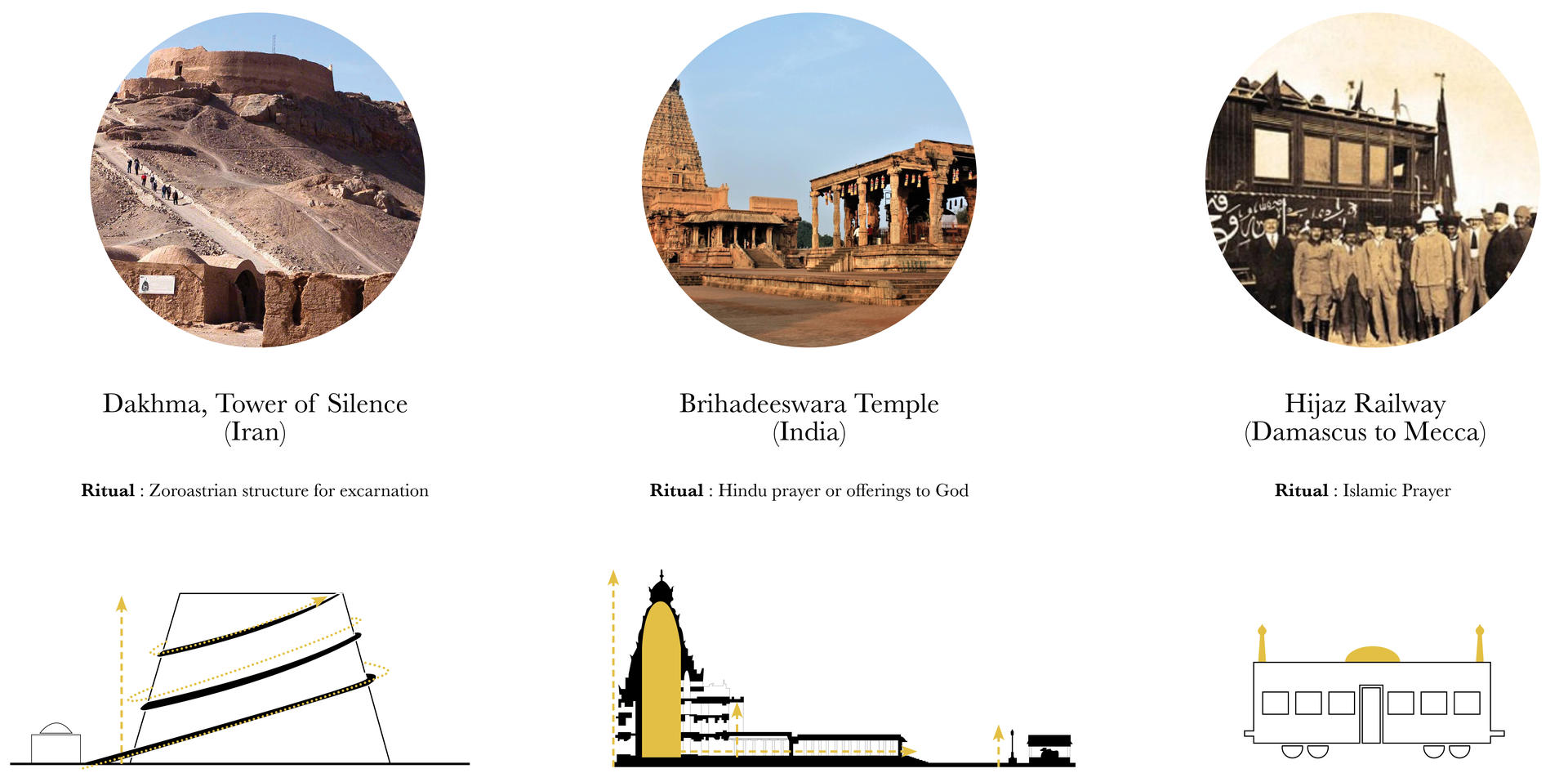
Image
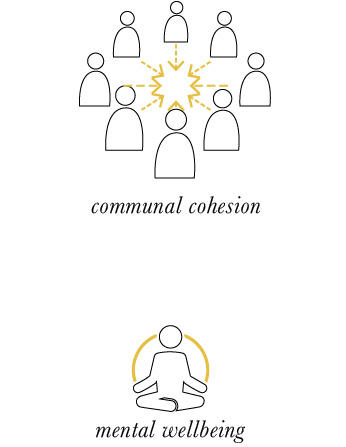
Why are Rituals important?
Rituals can be of different kinds, and the same can vary from one region to another. We have established that they can be sacred or religious in nature or their drive can be purely secularized and personal. There is an order and system that every ritual entail and emulates in its performance. But what does the ritual itself do to the mind and the body that makes it so important to us as humans? Anthropologist Dimitris Xygalatas at the University of Connecticut says rituals are ‘powerful technologies of the mind’.
Rituals provide us with a sense of identity, especially when tied to culture. They are systems which when in place validate a community and increases social cohesion. It isn’t surprising that two individuals or communities who have difference of opinions, when come together to perform a communal ritual are social and united by it. This leads us to understand that rituals also have a psychological benefit. Involvement in these repeated and orderly activities is known to reduce anxiety, boosts confidence and relaxes the mind. The fact that it is goal oriented helps keeps the body and mind focused.
These are specific to the activity itself. However, can these benefits be felt in spaces with no specific ritual value? Can rituals help us design spaces which cater to benefits of its user through ritual inspired spatial cues?
Madurai
Athens of the East - The Cultural capital of Tamil Nadu
Image

The host structure which is a 17th century palace, is in the South Indian city of Madurai in the state of Tamil Nadu. It is one of the oldest cities in the world and is also known to be a region of interest in the evolution of the Tamil language. The planning of South Indian cities in the past have been extremely reliant on Hinduism, culture and thereby the traditions followed. So naturally Madurai planning was highly influenced by the temple of the main deity of the city - Goddess Meenakshi which is in the south of the city. As in temple cities, Madurai grew around the temple in concentric squares – and one of those regions is where the host, Thirumalai Nayakar Mahal is located. The south of the city is known as the cultural center – owing to the location of the temple and the north of the river is the administrative part or new town.
Site: Thirumalai Nayakar Mahal
Built in 1639 AD during the reign of Thirumalai Nayaka, the palace is a one-of-a-kind architectural marvel in the South of India. It is an amalgamation of Dravidian, Gothic, Rajput and Islamic architecture. The palace was built when the king decided to move the capital back to Madurai from the old capital of Tiruchirappalli or Trichy. The palace which was four times the size of what remains (see right) is said to have been built by an Italian architect. Thirumalai Nayaka’s grandson, Chokkanatha Nayaka dismantled the palace in an effort to make his own new palace at Trichy using the stones and precious jewels from this one. Remnants of the old palace can be seen in the streets of the current urban fabric of Madurai.
Analysis of existing Rituals
Breaking down the existing festivities in a manner of understanding what the performance of these rituals entail help in highlight key factors that can spatially influence design decisions.
Using basic elements of space management arrived at from each of the three rituals, a new urban space can be created within the palace grounds to give a contemporary order and meaning to people using the host structure.
Image
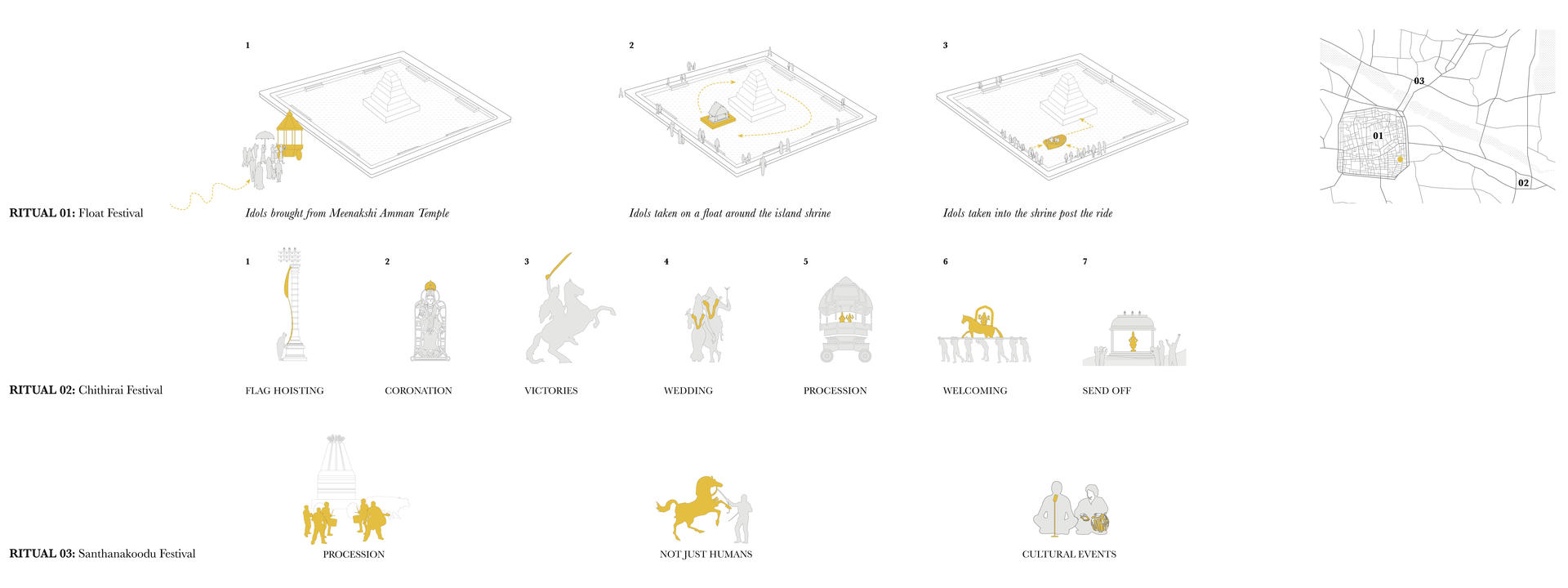
Image
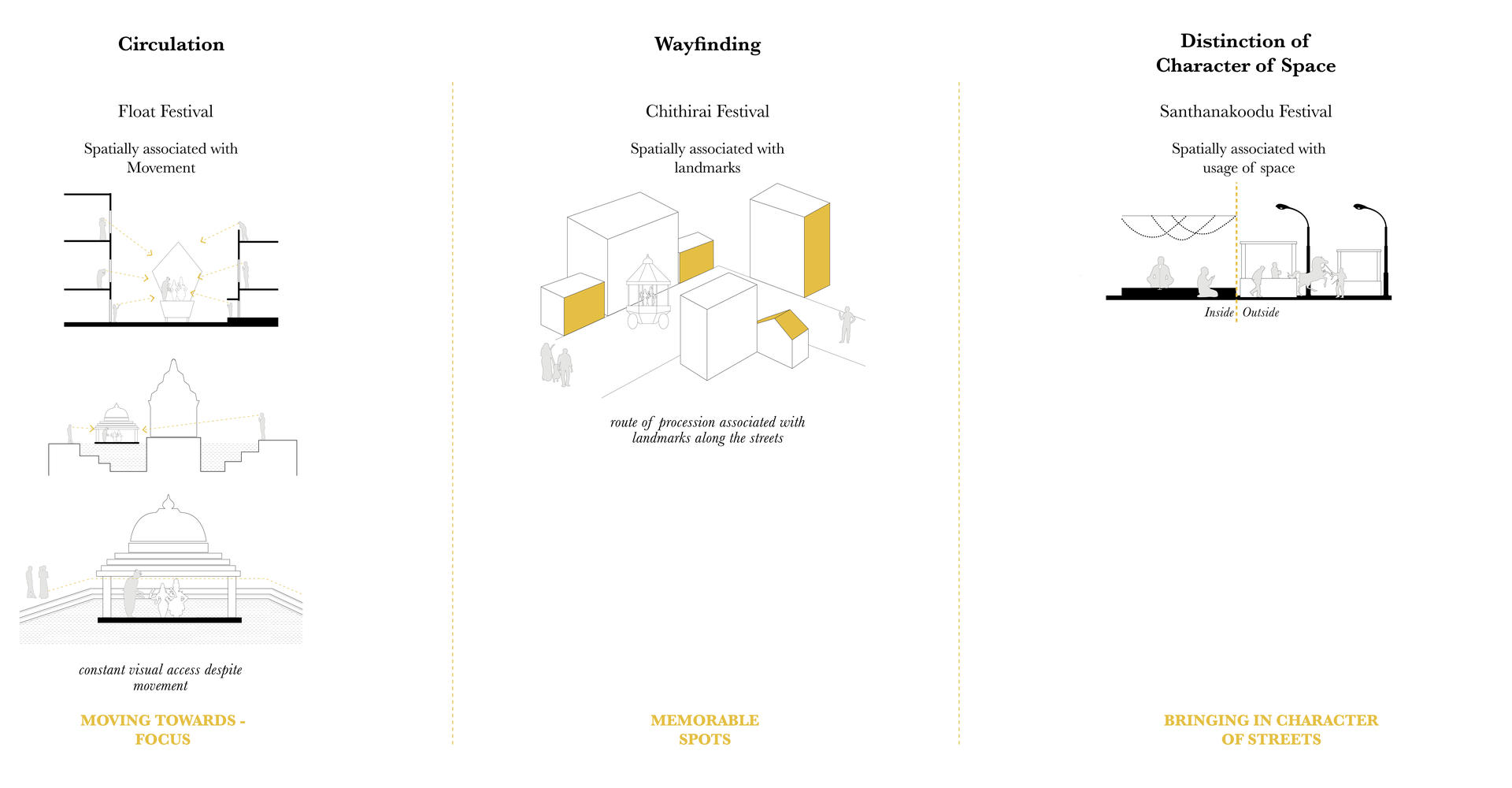
Proposed Design Strategies
Image
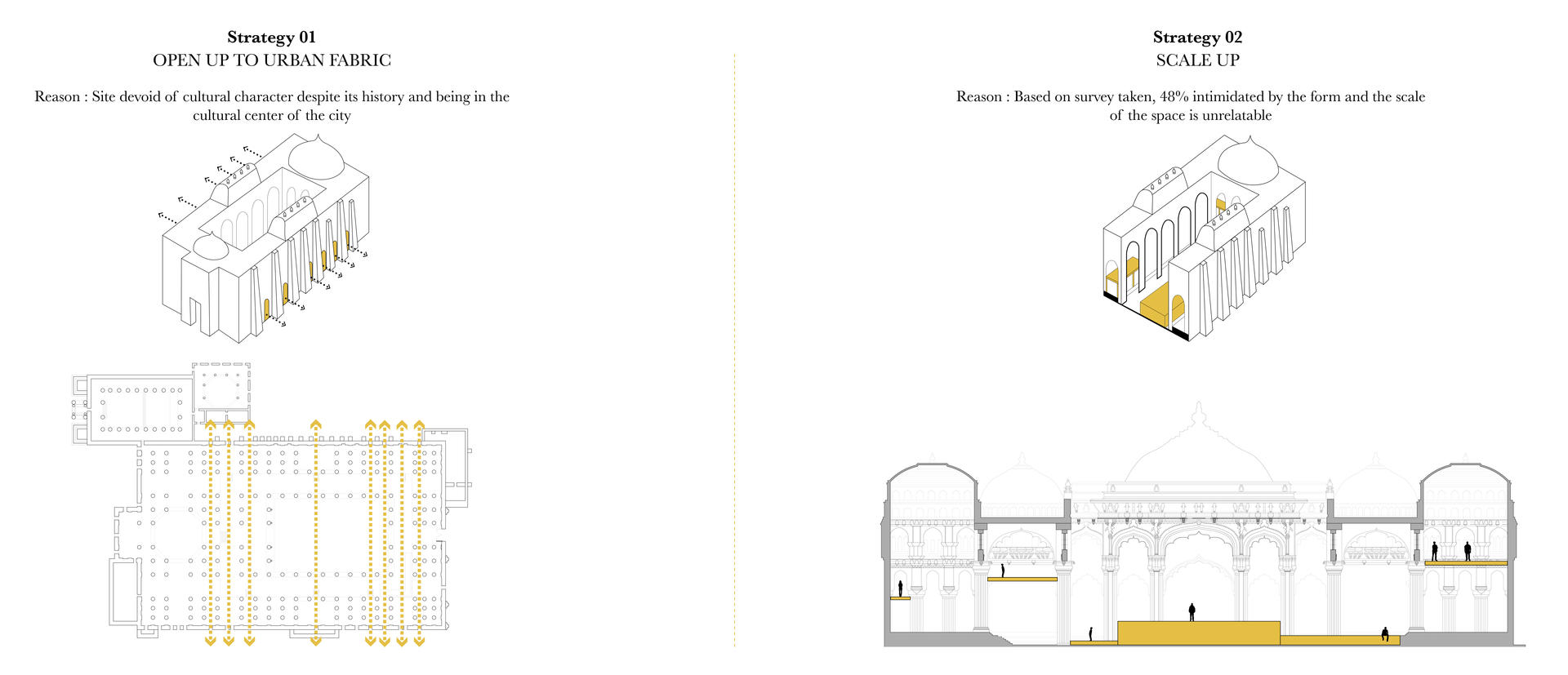
Image

Programmatically the space has been divided into three paths,
– Threshold Path
– Architectural Path
– Epic Path.
The Threshold Path reconnects the urban fabric to the site using vernacular language of Gopuram/gateway and thinnai/verandahs. The Architectural Path is to appreciate the different styles and elements of the existing which as established earlier forms a major part of the culture. Finally, the Epic Path narrates the story of one of the five Tamil Epics through space.
Image
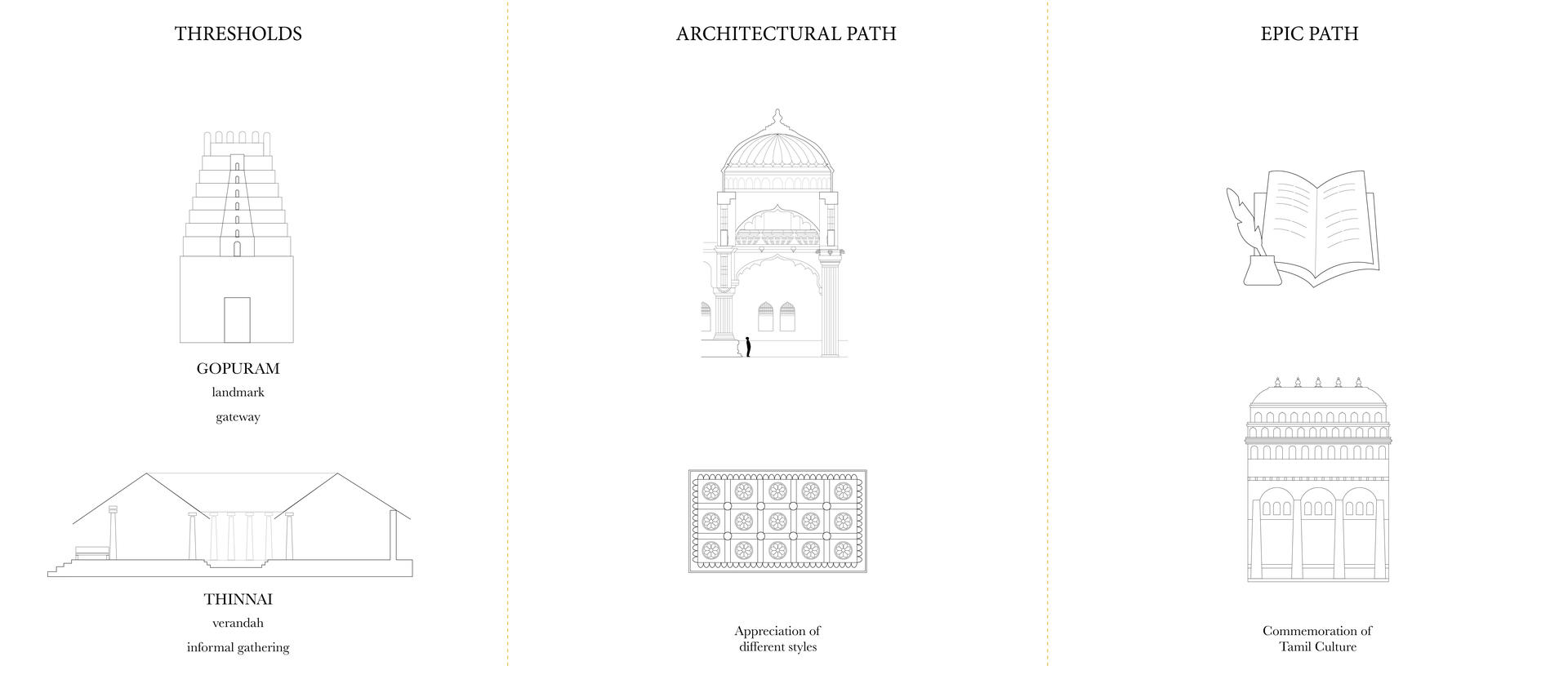
Image

Image
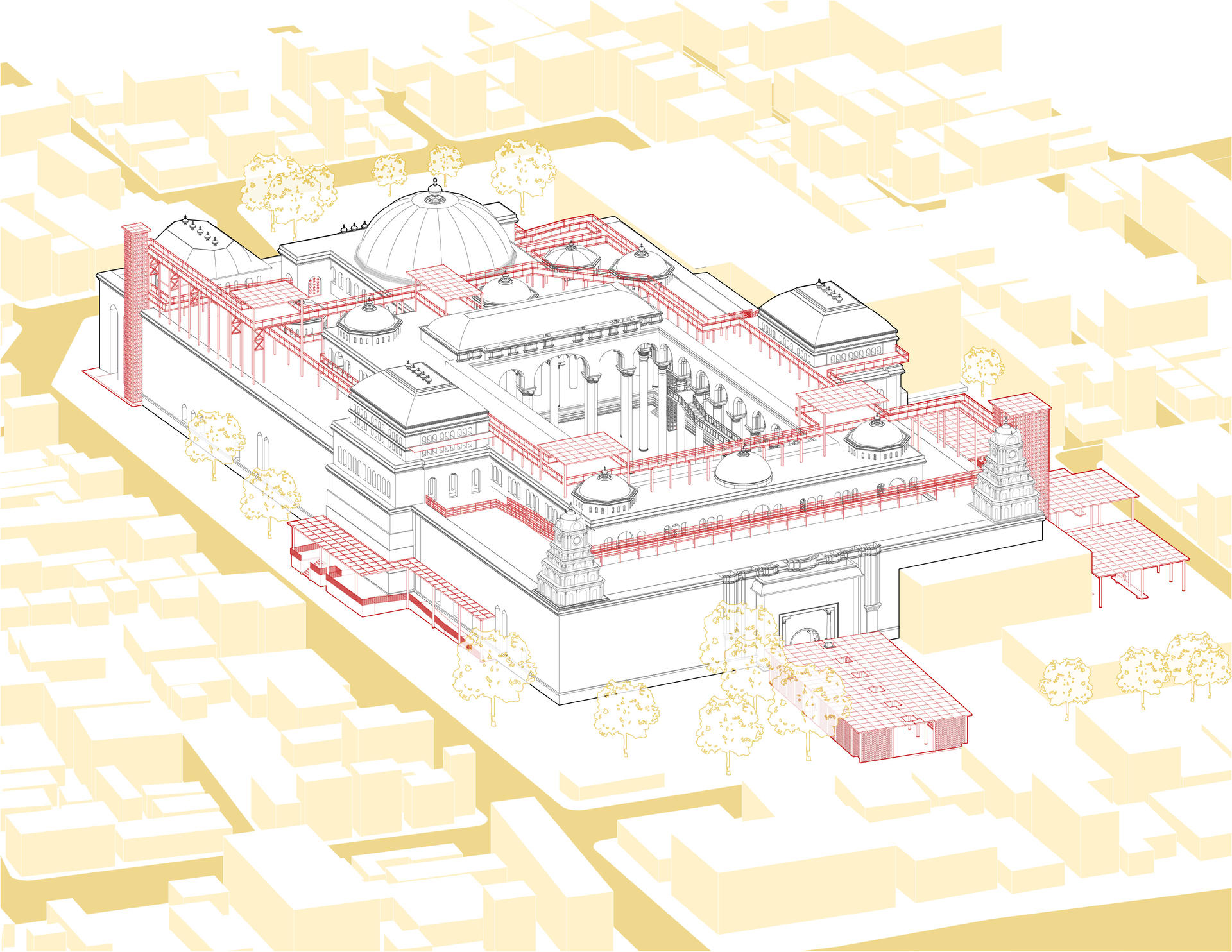
Threshold and New Street Access
The palace ground is situated in a dense neighborhood with mainly mixed use and residential buildings. This site is the only large plot of land in an area of multiple buildings and street accesses.
The palace is accessed only through one entrance on the Eastern front. There is a small door on the Northern wall which connects it to the Museum. The existing structure has two Gopuram like structures on its North and South facde - right in the middle of each side. Gopurams traditionally function as gateways in temples which is not the case here. Going by the intent of a Gopuram and the lack of accessibility to and through the site, a new street axis is created through the two existing Gopurams. A secondary visual axis is provided along the East - West direction by opening up the walls to foot traffic.
In all the four cardinal directions, four threshold moments are created which engage directly with the public and urban life around. These threshold spaces much like the vernacular architecture, provide with informal gathering through thinnai or verandahs. The existing compound walls around the site are removed in an effort to create an urban pocket for the locals in this dense residential neighborhood.
Image
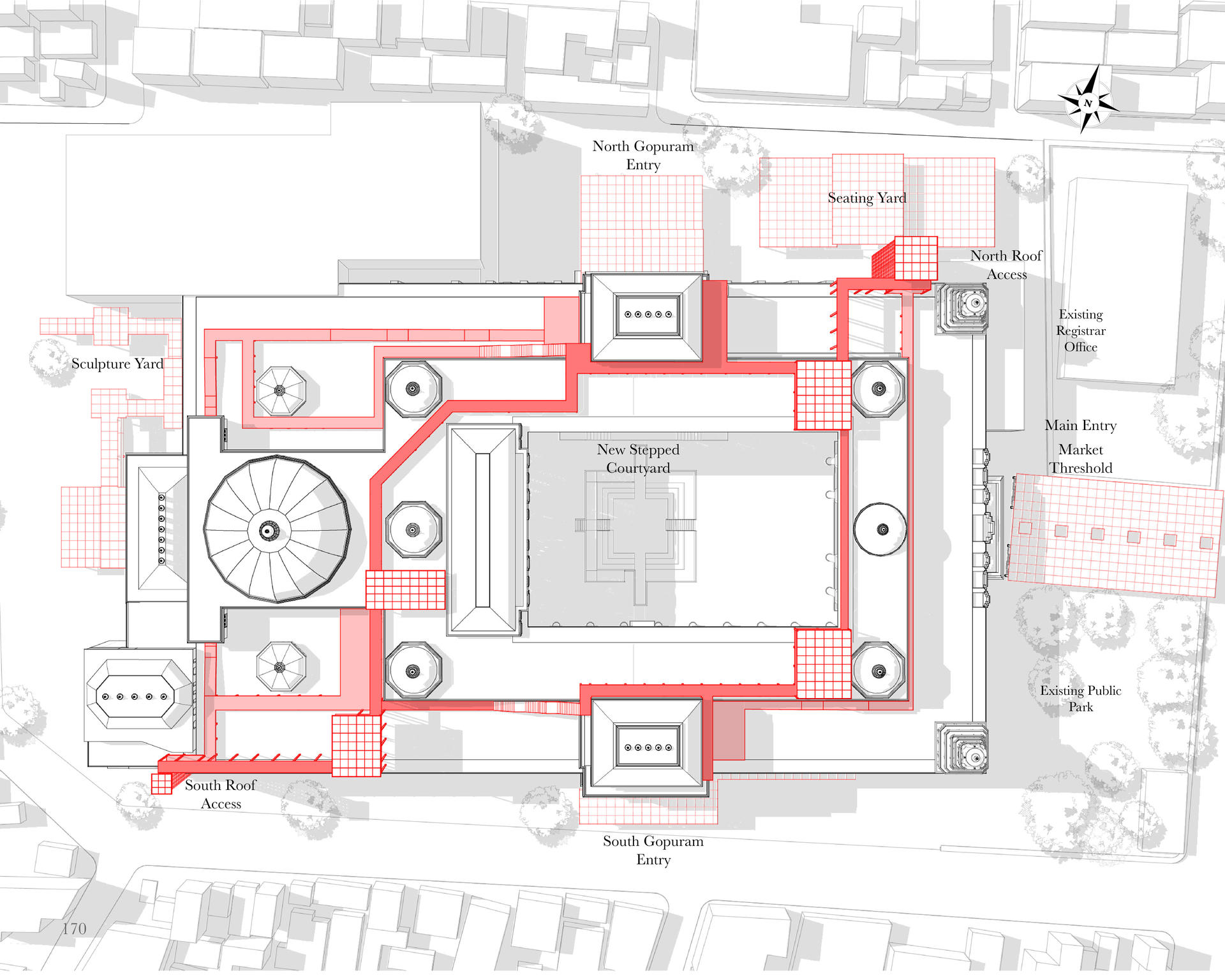
Image

Image
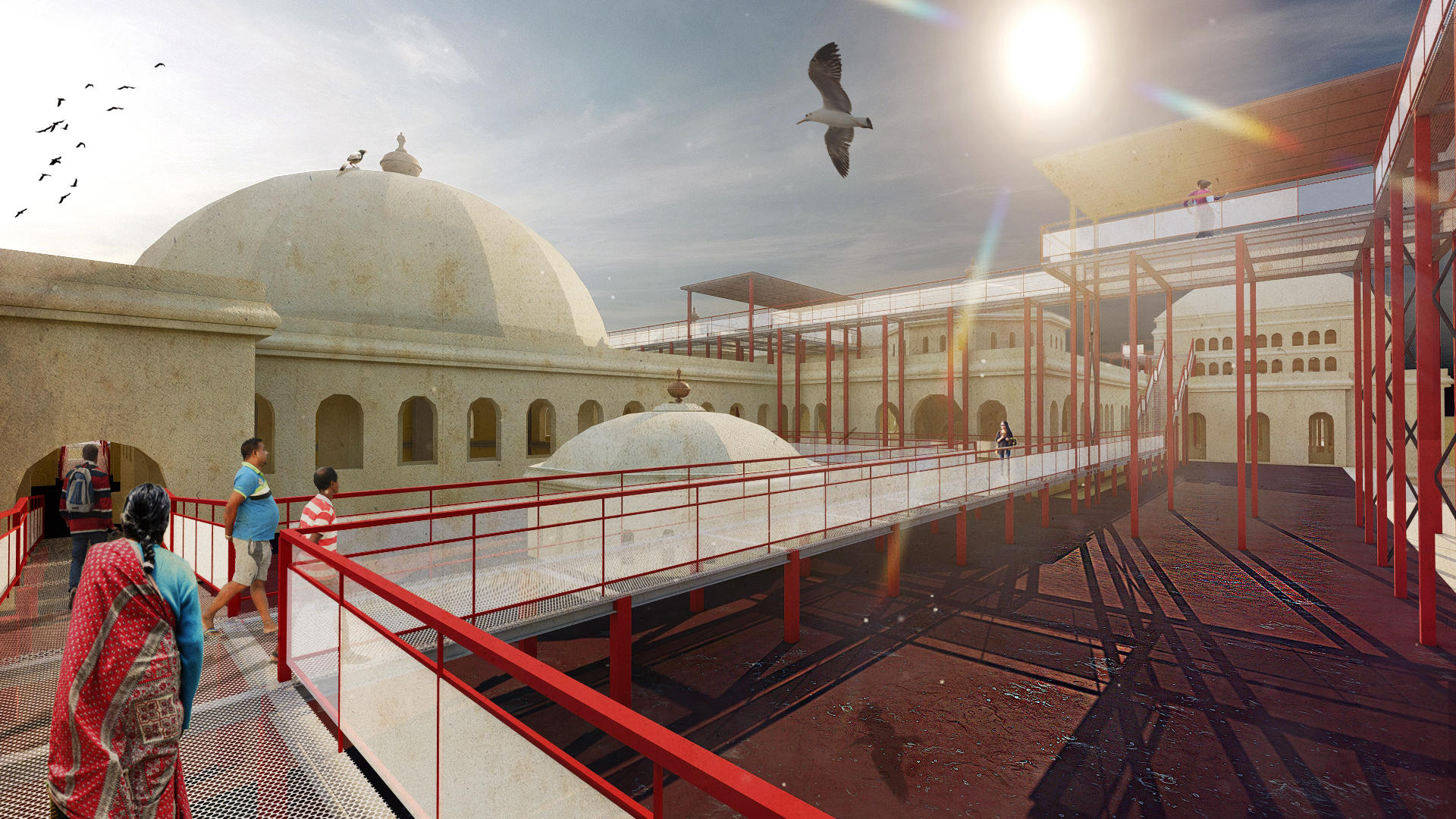
Story telling through Space
With the intention of providing a program of cultural and contextual significance, the task of uniting the locals and educating the tourists about Tamil Culture through literature is employed. Using our analysis of rituals and understanding what draws people to it spatially, the activity of walking through the story becomes an important aspect of utilizing the host structure.
The specific epic selected for this purpose is Civaka Cintamani, which was written by a poet who belonged to the region. The story is about a prince who grew away from the palace, unaware of his true identity. The path is divided into 5 parts based on the progression of the story. The 5 narratives – Drama, Growth, Intimacy, Encounter and Journey are spatially translated to bring out the experience of the story for visitors.
Drama employs light to set the stage for the story, Growth takes you vertically and provides different visibilities into the courtyard, Intimacy creates tight spaces between the columns, Encounter provides for random overlaps and finally Journey takes you through a path to the destination.
Image

Image
